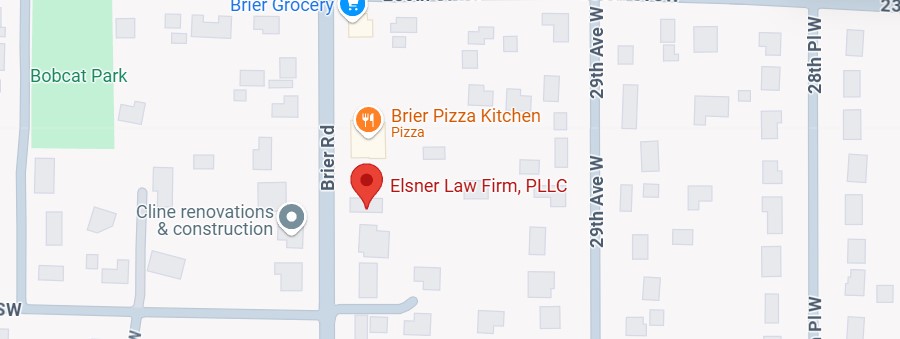At the Elsner Law Firm, we understand that being involved in a rear-end collision can be a traumatic and overwhelming experience. The speed at which these accidents occur significantly influences both the severity of your injuries and the complexity of your injury claim. It’s important to recognize how these variables affect the legal landscape of your claim, empowering you with knowledge to navigate this challenging time.
The Role of Speed in Rear-End Collisions
Force of Impact:As the speed of a vehicle increases, so does the force of impact. Rear end wrecks can generate significant force, leading to more severe injuries such as back injuries, neck fractures, and spinal and nerve damage. Higher-speed collisions often result in more serious injuries such as whiplash, back pain, spinal cord damage, or head trauma. Traumatic brain injury and head injuries are also common in high speed rear end crashes. This elevated risk underscores the importance of accurate and comprehensive medical documentation.
Insurance** Considerations:** The insurance company closely analyzes the speed at which the collision occurred to assess personal injury claims and medical expenses. Insurance companies may also scrutinize vehicle damage and lost wages when evaluating claims. In incidents involving low speeds, insurers might be skeptical about the severity of injuries and could challenge the legitimacy of your claim.
The Importance of Proof:Regardless of the speed, it is crucial to document your injuries meticulously. Medical records, detailed descriptions of your symptoms, and an expert legal team like Elsner Law Firm by your side are essential in substantiating your claim.
Understanding Different Collision Speeds:
- Low-Speed Collisions: These can still result in injuries such as whiplash. Even a minor rear end collision can result in common neck injury, shoulder injuries, and psychological injuries. However, insurance companies might argue that these injuries are less severe, potentially reducing the compensation you receive.
- Moderate-Speed Collisions: These incidents often cause more significant injuries that could include soft tissue damage or muscle strains, making a robust legal strategy crucial. This is a common rear end collision scenario and can cause back injuries and more severe injuries, sometimes requiring reconstructive surgery.
- High-Speed Collisions: These devastating accidents can lead to severe injuries like broken bones, head trauma, and spinal cord damage, necessitating a substantial injury claim. Severe rear end collisions at high speeds can result in devastating injuries, including traumatic brain injury and the need for extensive medical care.
Other Influential Factors:
- Vehicle Design and Type: The design of the vehicles involved can significantly influence how collision forces are absorbed and distributed. The lead vehicle and actions of the other driver can influence liability in rear end crashes.
- Seatbelt Usage: Wearing a seatbelt correctly can drastically reduce the severity of injuries.
- Head Restraint Design: Properly adjusted headrests can help prevent certain types of injuries like whiplash.
- Driver Condition: External factors such as driver fatigue or distraction also play a critical role in the collision’s outcome.
Steps to Take After a Rear-End Collision:
- Seek Medical Attention: Regardless of your initial assessment, consult a doctor to rule out hidden injuries and begin a documented medical trail. Psychological injuries may not be immediately apparent and should be evaluated by a professional.
- Report the Accident: Filing a police report provides an official account of the incident, crucial for your claim.
- Gather Evidence: Collect as much evidence as possible at the scene. Document the accident scene, vehicle damage, and any suffered injuries to support your personal injury claim and recover compensation. Take photos, exchange information, and note down witness details.
- Contact Elsner Law Firm: With significant injuries, partnering with seasoned legal advocates like us ensures that your rights are protected and that you navigate the claims process with expert guidance.
Being rear ended in a car crash can result in lost wages and ongoing medical expenses, making it crucial to pursue a personal injury claim.
At Elsner Law Firm, we are more than your lawyers; we are your partners in recovery. Traffic accidents like rear end wrecks can have long-term consequences, and Elsner Law Firm is experienced in helping clients recover compensation for all types of injuries, including those that are not immediately visible after such an accident. We commit to tirelessly advocating for your rights and securing the compensation you deserve. Remember, in times of need, you’re not alone. We’re here to help guide you through every step of your legal journey with compassion, dedication, and understanding. Reach out today – let’s discuss how we can support you during this challenging time 206-447-1425.
Introduction to Car Accidents
Car accidents are an unfortunate reality on today’s roads, with rear end collisions ranking among the most common and potentially serious types of crashes. Rear end accidents can happen in an instant, often when least expected, and can affect drivers of all experience levels and vehicle types. When a rear end collision occurs, the sudden impact can lead to a wide range of rear end collision injuries, from mild discomfort to life-altering trauma. Common consequences include chronic pain, spinal injuries, and traumatic brain injuries, all of which can have lasting effects on car accident victims and their families.
The aftermath of such accidents can be overwhelming, especially when dealing with the claims process and seeking fair compensation for your injuries. It is crucial for accident victims to seek immediate medical attention, even if injuries are not immediately apparent, as some conditions—like brain injuries or spinal injuries—may develop or worsen over time. Consulting a personal injury attorney can help you navigate the complexities of your case, ensuring your rights are protected and that you have the best chance of recovering the compensation you deserve for your collision injuries. Understanding the causes and consequences of rear end collisions is the first step toward prevention and recovery in such accidents.
Causes of Rear-End Collisions
Rear end collisions are most often the result of driver negligence, with tailgating, distracted driving, and speeding being the leading causes. When a driver follows another vehicle too closely, they reduce their ability to react in time if the lead driver slows down or stops suddenly, making a rear end accident much more likely. Distractions such as texting, using a phone, or even eating while driving can cause a driver to miss critical changes in traffic, resulting in a rear end crash. Speeding further compounds these risks, as higher speeds leave less time and distance to avoid an end collision.
Other contributing factors include poor weather conditions, hazardous road design, and inadequate vehicle maintenance, all of which can increase the likelihood of rear end collisions. In some situations, the lead driver may also share responsibility, such as when they brake abruptly or reverse without warning. Determining liability in these cases can be complex, but a personal injury attorney can help accident victims gather evidence, deal with insurance companies, and pursue fair compensation for rear end collision injuries. Understanding these causes is essential for both preventing such accidents and ensuring that those affected receive the support they need.
Types of Common Injuries in Rear-End Collisions
Rear end collisions can cause a wide array of injuries, ranging from mild to catastrophic. One of the most common injuries is whiplash, a type of soft tissue injury that occurs when the sudden impact causes the head and neck to snap forward and backward, straining the neck muscles and ligaments. Soft tissue injuries can also affect the back and shoulders, leading to ongoing pain and limited mobility. Spinal cord injuries are another serious consequence, with the potential to cause partial or complete paralysis depending on the severity of the damage.
Traumatic brain injuries, including concussions and skull injuries, can result if the head strikes the steering wheel or other hard surfaces during the crash. These brain injuries may not always be immediately apparent but can have long-term effects on cognitive and physical function. Broken bones, such as broken ribs, and internal injuries like organ damage or internal bleeding, are also common in rear end accidents, especially in severe cases. Catastrophic injuries, including spinal fractures, severe burns, and even fatalities, can occur in high-speed or particularly forceful collisions. For all accident victims, seeking immediate medical attention is critical to diagnose and treat these injuries, prevent complications, and document the extent of harm for any future claims.
Understanding Rear-End Collision Injuries at Different Speeds
The speed at which a rear end collision occurs plays a significant role in determining the type and severity of injuries sustained. Even low-speed rear end collisions can cause significant harm, particularly to the neck and back, as the sudden impact forces the head and spine to snap forward and backward. This motion often leads to soft tissue injuries like whiplash, which can result in chronic pain and limited mobility for car accident victims.
In contrast, high-speed rear end collisions are more likely to result in severe injuries, such as traumatic brain injuries, spinal cord injuries, and even fatalities. The greater force of impact can cause the vehicle to crumple, leading to crushing injuries, broken bones, and internal injuries. The risk of catastrophic outcomes, including spinal fractures and partial or complete paralysis, increases dramatically with higher speeds. Additionally, the likelihood of brain injuries and other end collision injuries rises as the force of the crash intensifies.
Understanding how speed influences injury patterns is essential for both medical treatment and the legal claims process. A personal injury attorney can help accident victims assess the full extent of their injuries, gather necessary documentation, and pursue fair compensation for their damages. Whether the collision was minor or severe, seeking immediate medical attention and legal guidance is crucial to protect your health and your rights after a rear end collision.






